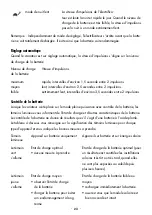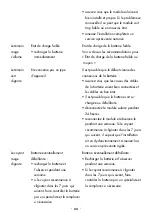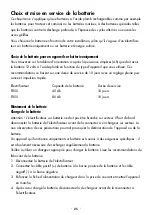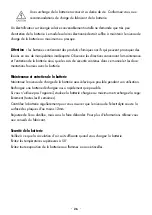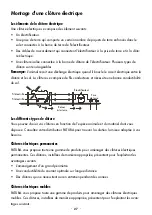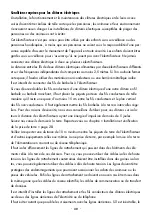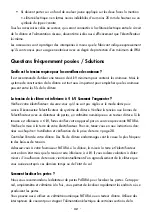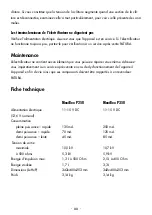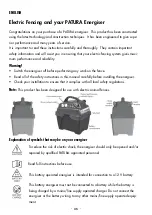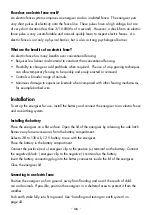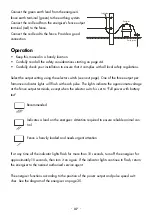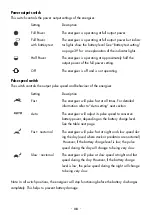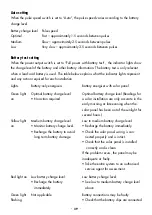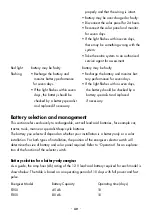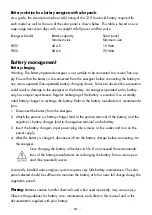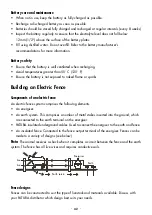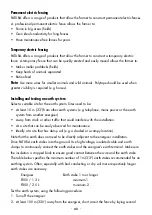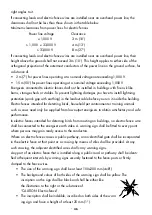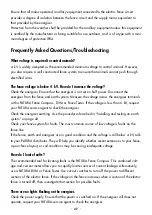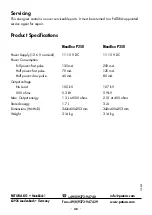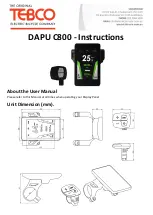
How does an electric fence work?
An electric fence system comprises an energiser and an insulated fence. The energiser puts
very short pulses of electricity onto the fence line. These pulses have a high voltage, but are
of very short duration (less than 3/10.000ths of a second). However, a shock from an electric
fence pulse is very uncomfortable and animals quickly learn to respect electric fences. An
electric fence is not only a physical barrier, but is also a strong psychological barrier.
What are the benefits of an electric fence?
An electric fence has many benefits over conventional fencing:
• Requires less labour and material to construct than conventional fencing.
• Flexibility to change or add paddocks when required. The use of strip grazing techniques
can allow temporary fencing to be quickly and easily erected or removed.
• Controls a broader range of animals.
• Minimises damage to expensive livestock when compared with other fencing mechanisms,
for example barbed wire.
Installation
To set up the energiser for use, install the battery and connect the energiser to an electric fence
and an earthing system.
Installing the battery
Place the energiser on a flat surface. Open the lid of the energiser by releasing the side latch.
Remove any loose accessories from the battery compartment.
Select a 28 to 130 Ah, 12 V battery to use with the energiser.
Place the battery in the battery compartment.
Connect the positive (red +) energiser clip to the positive (+) terminal on the battery. Connect
the negative (black -) energiser clip to the negative (-) terminal on the battery
Insert the battery connecting plug into the battery connector inside the lid of the energiser.
Close the energiser lid
Connecting to an electric fence
Position the energiser on firm ground, away from flooding and out of the reach of child-
ren and animals. If possible, position the energiser in a sheltered area to protect it from the
weather.
Push earth stake fully into firm ground. See “Installing and testing an earth system” on
page
43.
- 36 -


